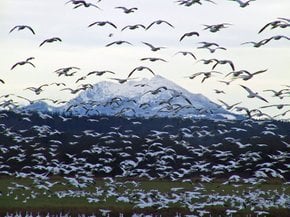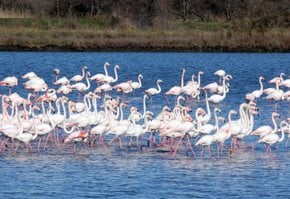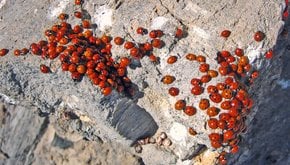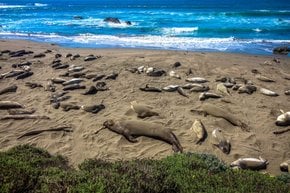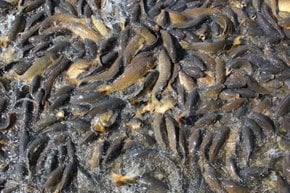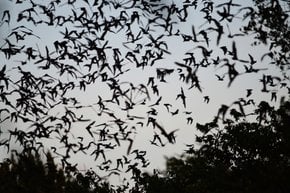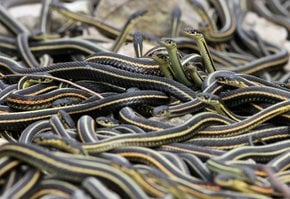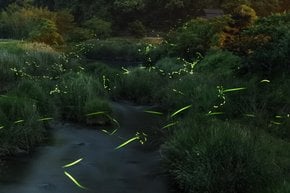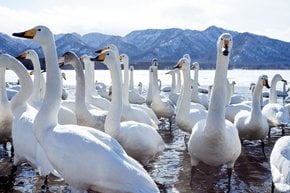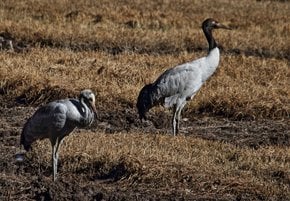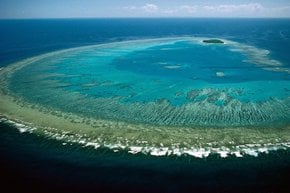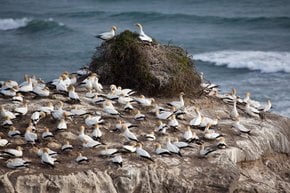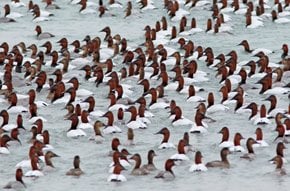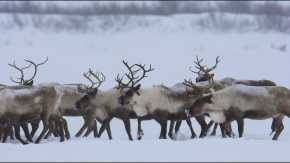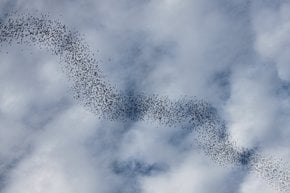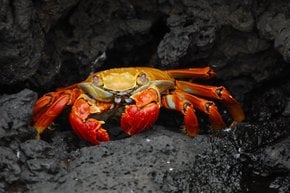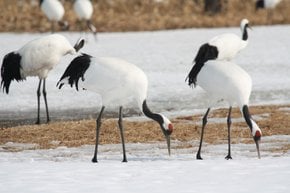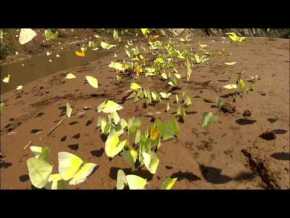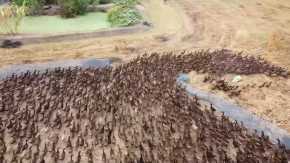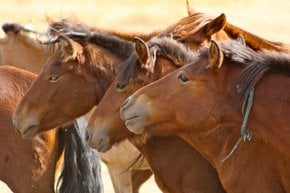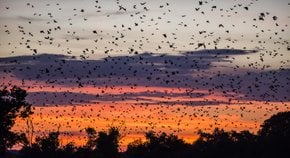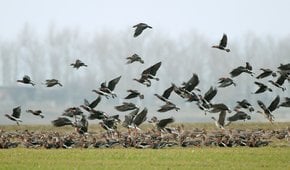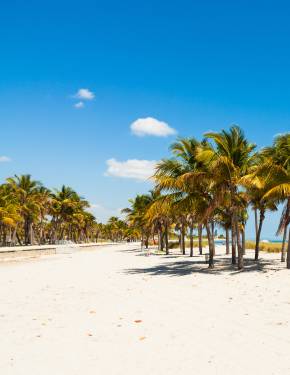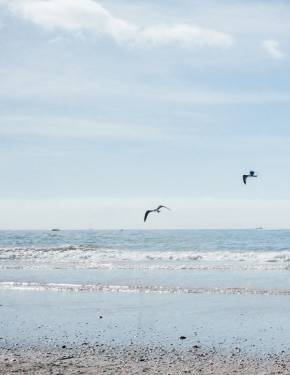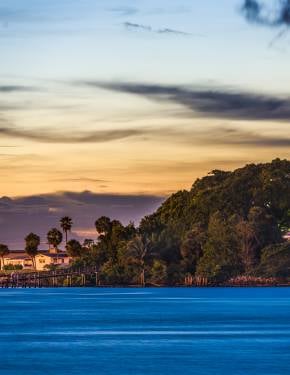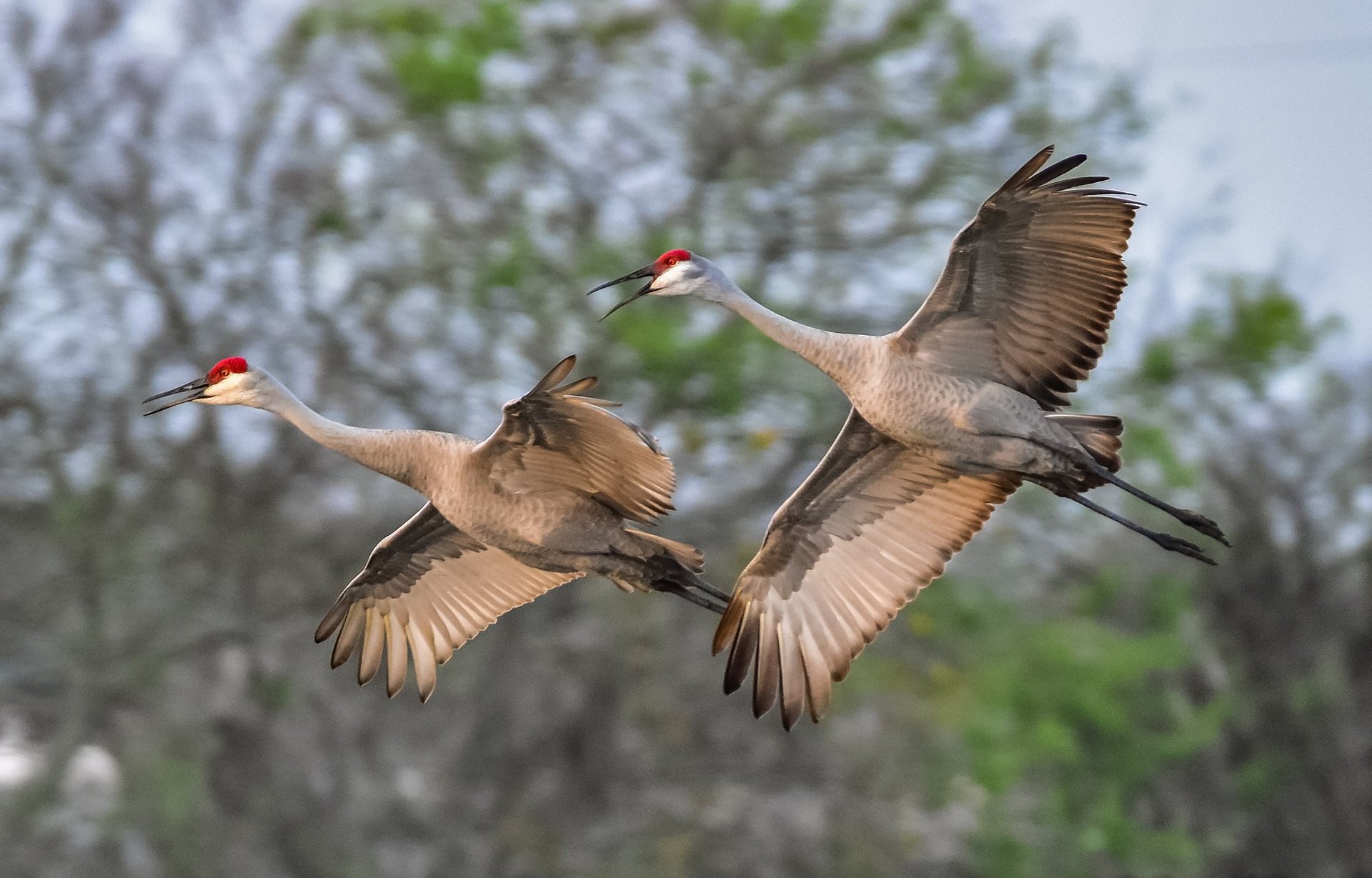

Florida is one of the few places that is lucky enough to get two sandhill crane populations. About 5,000 birds live in Florida permanently and can be watched year-round. Florida sandhill cranes are a bit smaller than some of their migratory relatives and can reach a height of 47 in (120 cm). Their wingspan is about 79 in (200 cm). Resident cranes can be found mostly in the marshes and swamps of northeastern and central Florida. Okefenokee Swamp, a 438,000-acre wetland on the border between Florida and Georgia, is the best place to spot these graceful birds. Because cranes like open spaces, they are also abundant in the Florida dry prairie region north and west of Lake Okeechobee. Look for cranes at Kissimmee Prairie Preserve State Park, Three Lakes Wildlife Management Area, and Myakka River State Park. Crane nesting grounds have also been found at Cypress Creek South Natural Area in Palm Beach County.
Cranes native to Florida can usually be spotted in small groups or pairs. They mate for life, females lay eggs in the spring, and colts appear in June and July. For the first few months, the young cranes follow their parents everywhere—what an adorable sight!
If you see a large flock of cranes in Florida, it's likely that you've come across migratory species. About 25,000 of them spend the winter in the state before heading to their nesting grounds in the Midwest and Canada. These cranes mostly live in freshwater marshes and prairies of Central and Southern Florida. You can easily spot them in the Everglades and even at golf courses. Cranes live quite close to people in Florida, so if you encounter them, please be respectful. And remember that it's illegal to feed sandhill cranes in the state.
Practical info
Where can sandhill cranes be found in Florida?
Sandhill cranes are mostly found in northeastern and central Florida's marshes and swamps. Look for them at Okefenokee Swamp, which straddles Florida and Georgia. Additionally, sandhill cranes thrive in the dry prairie region north and west of Lake Okeechobee. Watch for them at the Myakka River State Park, Three Lakes Wildlife Management Area, and Kissimmee Prairie Preserve State Park. In Palm Beach County, crane nesting grounds have been spotted at Cypress Creek South Natural Area. Show more
When is the best season to spot resident sandhill cranes in Florida?
In Florida, resident sandhill cranes can be best observed from June to July. Spring is when females lay eggs and produce offspring that appear in the summer months of June and July. The young cranes stick together with their parents for the first few months. While sandhill cranes, which come in different variations, can be observed year-round, it is best to note that sightings of migratory birds are also possible. Show more
Do Florida sandhill cranes have a bigger size than their migratory counterparts?
Florida sandhill cranes aren't larger than any migratory subspecies and generally have a height of 47 inches (120 cm) and a wingspan of approximately 79 inches (200 cm). Show more
During winter, where do migratory sandhill cranes usually spend their time in Florida?
During winter, migratory sandhill cranes flock to the freshwater marshes and prairies of southern and central Florida. Approximately 25,000 migratory birds spend their winter in Florida before migrating to nesting grounds in Canada and the Midwest. They can frequently be spotted in the Everglades or even on golf courses. People should always be respectful and courteous to them as they live nearby people in Florida. Show more
Is it okay to feed sandhill cranes in Florida?
It's not permissible to feed sandhill cranes if found in Florida. Respect should be given for the fact that cranes live close to the area's human population. Feeding wild birds can teach them bad habits and potentially cause their death. Migratory species can often be identified in a large flock of sandhill cranes. Please remember to be aware of your actions around these birds. Show more




